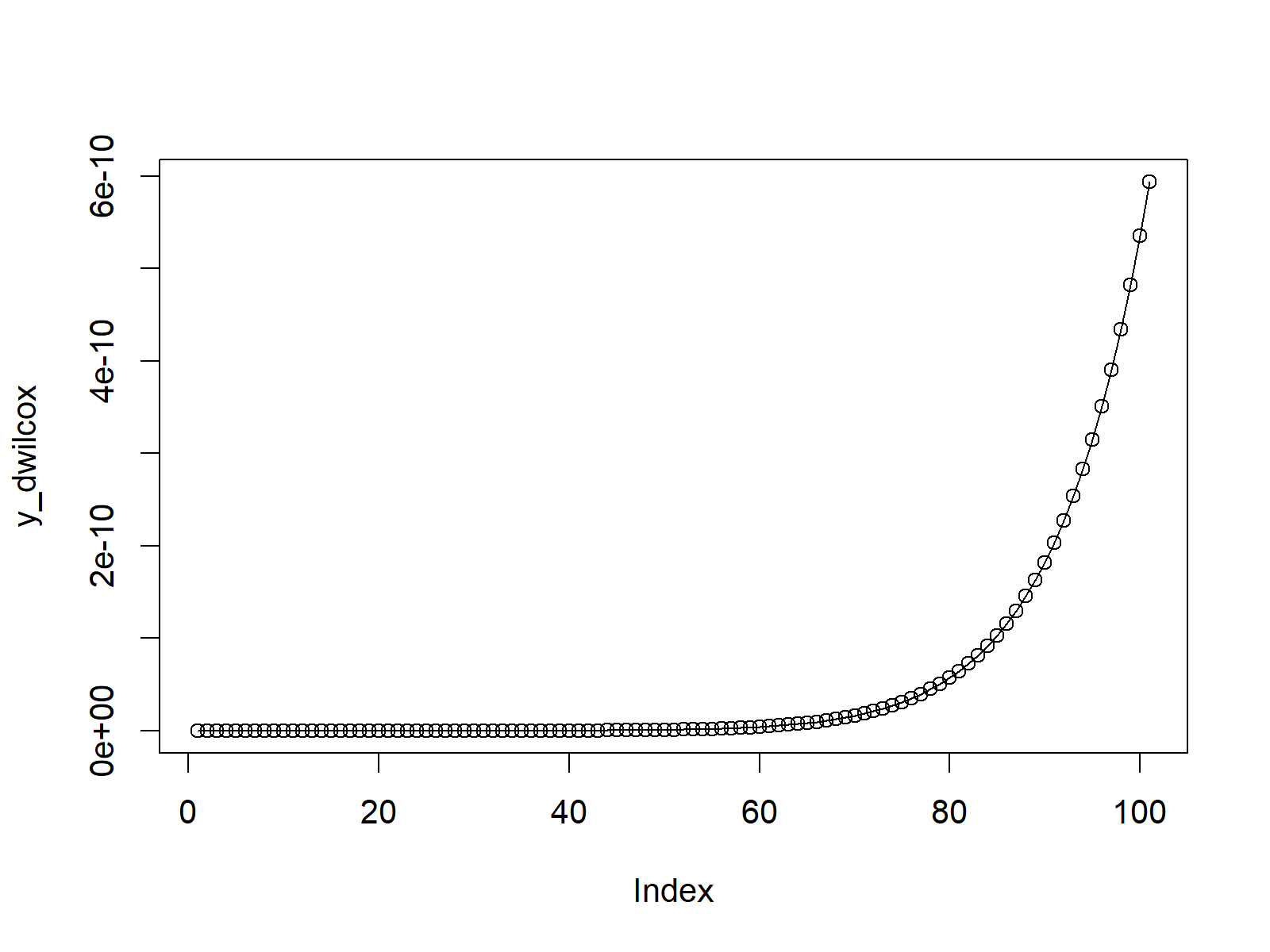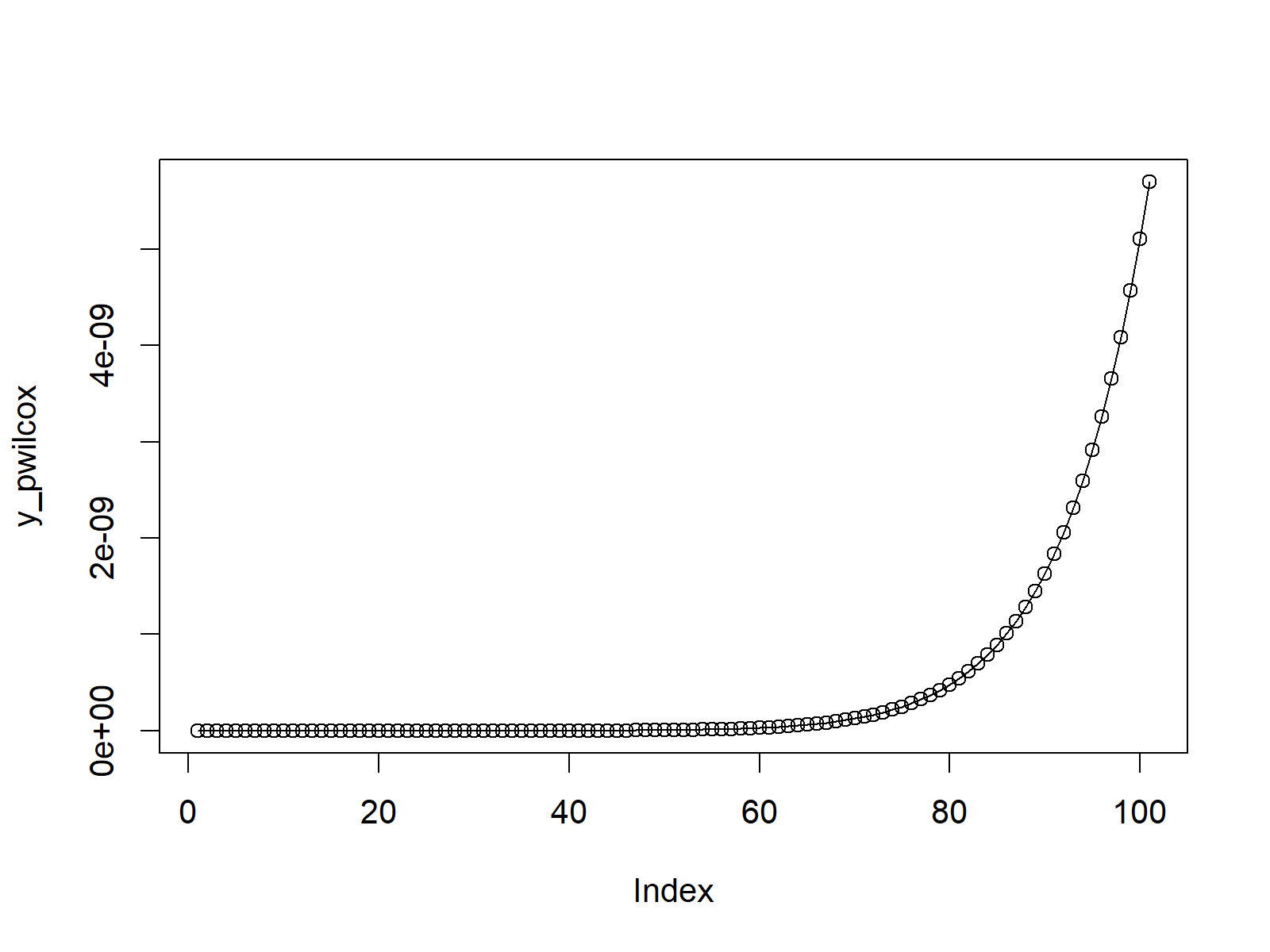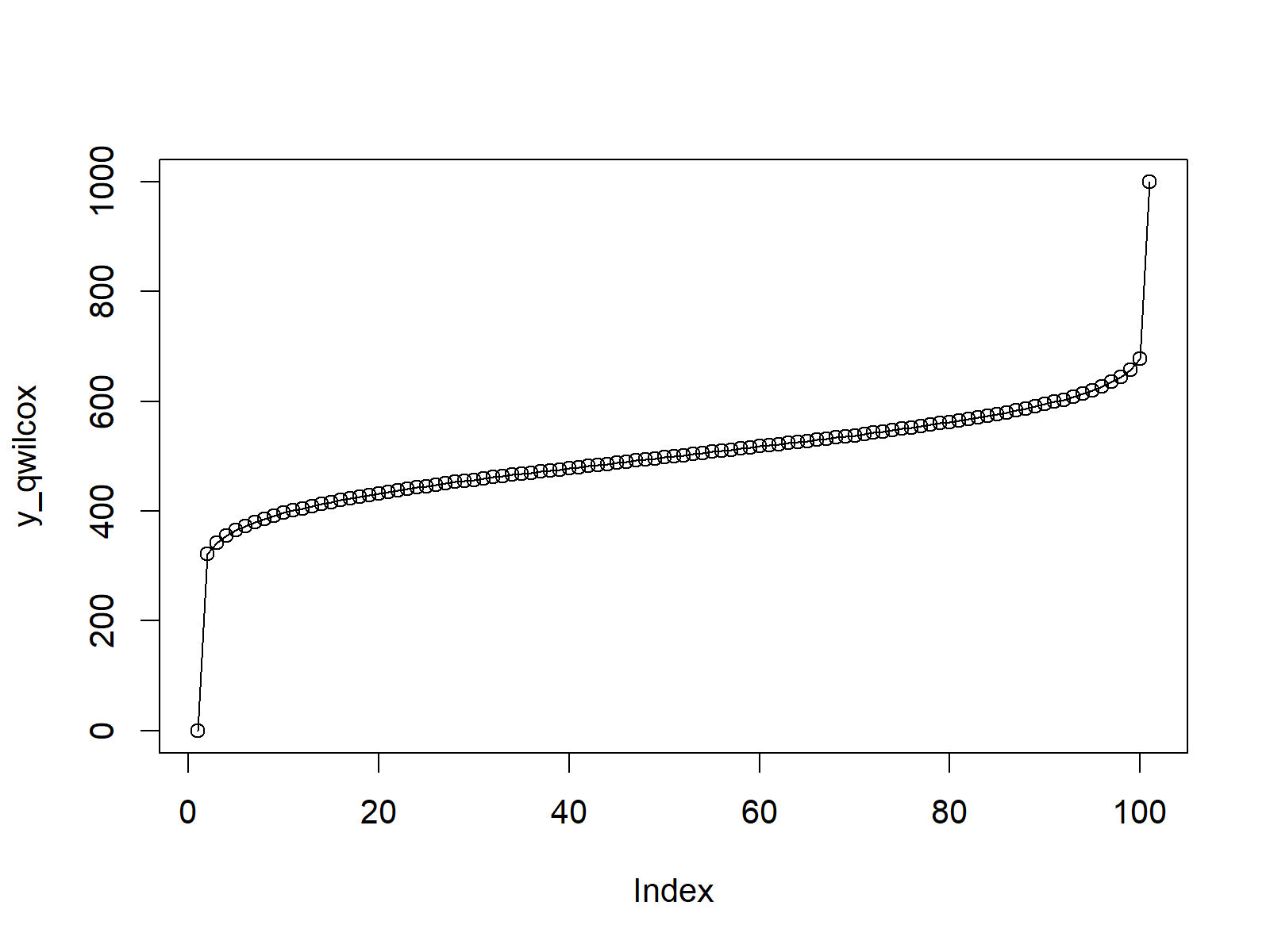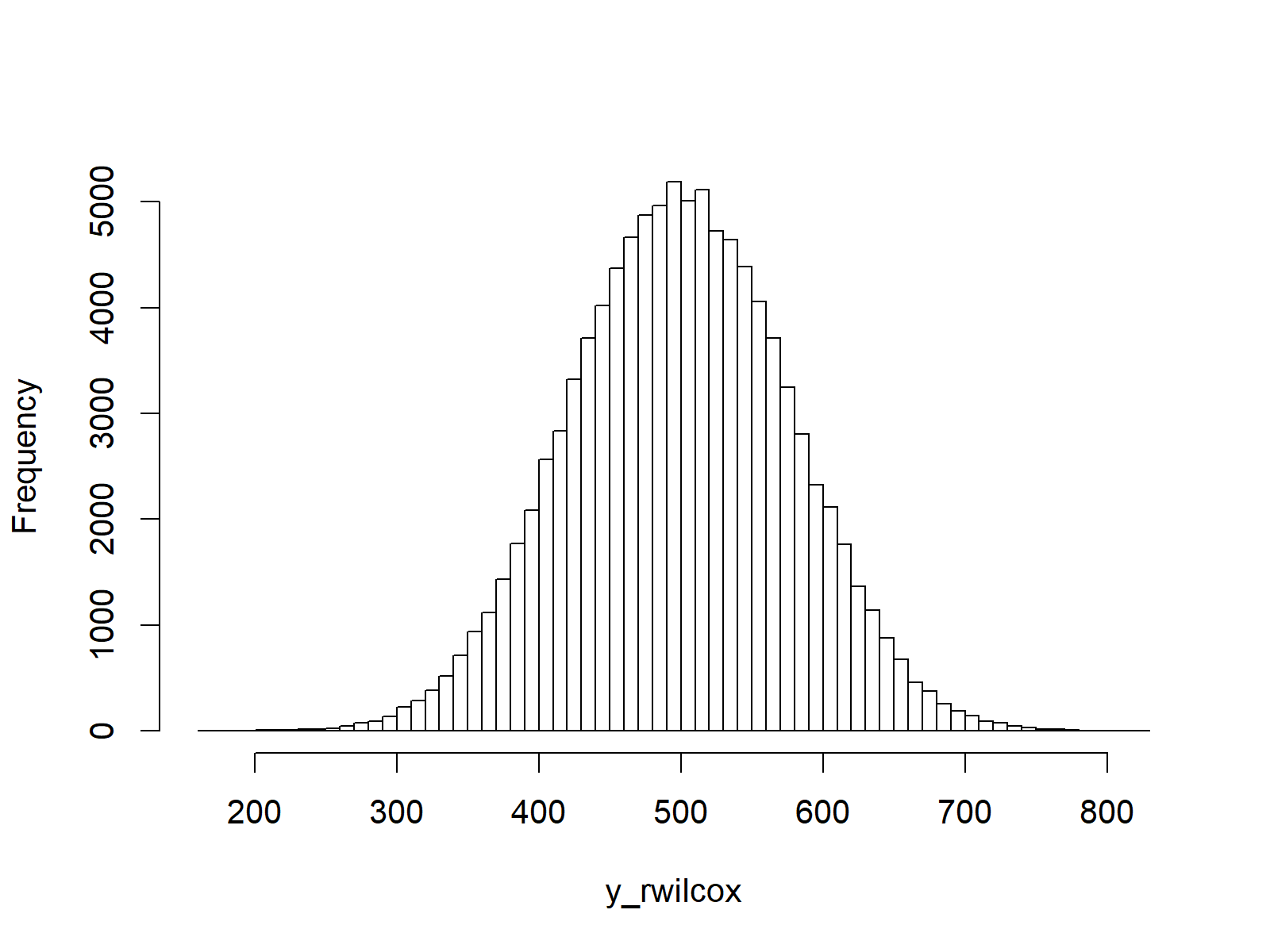Wilcoxonank Sum Statistic Distribution in R (4 Examples) | dwilcox, pwilcox, qwilcox & rwilcox Functions
This article illustrates how to apply the Wilcoxonank Sum Statistic functions in the R programming language.
The table of content is structured as follows:
- Example 1: Wilcoxonank Sum Statistic Probability Density Function (dwilcox Function)
- Example 2: Wilcoxonank Sum Statistic Cumulative Distribution Function (pwilcox Function)
- Example 3: Wilcoxonank Sum Statistic Quantile Function (qwilcox Function)
- Example 4: Generating Random Numbers (rwilcox Function)
- Video & Further Resources
Let’s dive into it.
Example 1: Wilcoxonank Sum Statistic Probability Density Function (dwilcox Function)
The following R code shows how to draw a graph illustrating the probability density function (PDF) of the Wilcoxonank Sum Statistic:
x_dwilcox <- seq(0, 100, by = 1) # Specify x-values for dwilcox function y_dwilcox <- dwilcox(x_dwilcox, m = 50, n = 20) # Apply dwilcox function plot(y_dwilcox, type = "o") # Plot dwilcox values

Figure 1: PDF of Wilcoxonank Sum Statistic.
Example 2: Wilcoxonank Sum Statistic Cumulative Distribution Function (pwilcox Function)
This example explains how to draw a graphic of the cumulative distribution function (CDF) of the Wilcoxonank Sum Statistic:
x_pwilcox <- seq(0, 100, by = 1) # Specify x-values for pwilcox function y_pwilcox <- pwilcox(x_pwilcox, m = 50, n = 20) # Apply pwilcox function plot(y_pwilcox, type = "o") # Plot pwilcox values

Figure 2: CDF of Wilcoxonank Sum Statistic.
Example 3: Wilcoxonank Sum Statistic Quantile Function (qwilcox Function)
This example shows how to create a graphic of the quantile function of the Wilcoxonank Sum Statistic:
x_qwilcox <- seq(0, 1, by = 0.01) # Specify x-values for qwilcox function y_qwilcox <- qwilcox(x_qwilcox, m = 50, n = 20) # Apply qwilcox function plot(y_qwilcox, type = "o") # Plot qwilcox values

Figure 3: Quantile Function of Wilcoxonank Sum Statistic.
Example 4: Generating Random Numbers (rwilcox Function)
The last example illustrates how to generate random numbers according to the Wilcoxonank Sum Statistic:
set.seed(98989) # Set seed for reproducibility N <- 100000 # Specify sample size y_rwilcox <- rwilcox(N, m = 50, n = 20) # Draw N random values y_rwilcox # Print values to RStudio console hist(y_rwilcox, # Plot of randomly drawn density breaks = 50, main = "")

Figure 4: Random Number According to Wilcoxonank Sum Statistic.
Video & Further Resources
I have recently released a video instruction on my YouTube channel, which shows the R codes of this tutorial. You can find the video below:
The YouTube video will be added soon.
You might also have a look at the other tutorials on distributions and the simulation of random numbers in R:
- Bernoulli Distribution in R
- Beta Distribution in R
- Binomial Distribution in R
- Bivariate & Multivariate Distributions in R
- Cauchy Distribution in R
- Chi-Squred Distribution in R
- Exponential Distribution in R
- F Distribution in R
- Gamma Distribution in R
- Geometric Distribution in R
- Hypergeometric Distribution in R
- Log Normal Distribution in R
- Logistic Distribution in R
- Negative Binomial Distribution in R
- Normal Distribution in R
- Poisson Distribution in R
- Student t Distribution in R
- Studentized Range Distribution in R
- Uniform Distribution in R
- Weibull Distribution in R
- Wilcoxon Signedank Statistic Distribution in R
- Wilcoxonank Sum Statistic Distribution in R
Additionally, you may want to read the related tutorials of my website:
This article explained how to use the dwilcox, pwilcox, qwilcox, and rwilcox functions in the R programming language. Don’t hesitate to tell me about it in the comments, in case you have further questions.






